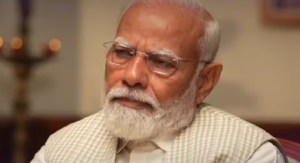When Narendra Modi became India’s Prime Minister in 2014, there was expectation his election would awaken the dormant potential of Indian scientific research and innovation.
While several initiatives were announced in subsequent years, the spending on science research and innovation remained stagnant.
The Principal Scientific Advisor to the government acknowledged recently that “if you look at any commonly used indicators to measure the scientific strength of a country, we are far behind, well below the global average.”
He said there was a need to improve indicators such as Gross Expenditure on R&D, the number of researchers per million population, women in science, the number of patents, and others.
After a decade of policy discussions aimed at increasing the gross expenditure on R&D, the government in 2023 established the National Research Foundation with a budget provision of nearly USD$6 billion for five years. However, only USD$30.9 million was allocated to the foundation in the national budget for 2023-24.
Over the last decade, India, in fact, has witnessed a throwback to the uncritical glorification of ancient knowledge to the detriment of science education.
The removal of certain rational and scientific themes — such as the Periodic Table, water conservation, air pollution and resource management — from the curriculum has caused alarm in the scientific community.
The exclusion of Darwin from the syllabus, for example, is not an innocuous change. It represents a setback for the teaching of science and poses a threat to scientific temper.
The optimism which greeted Modi’s ascension to power has evaporated.
And the future, if he returns for a third term, does not seem promising.
The most fundamental requirement for advancing science and innovation is adequate gross expenditure on R&D as a proportion of the GDP.
India’s expenditure on R&D as a proportion of GDP has remained relatively stagnant, actually decreasing from 0.8 percent in the 1990s to 0.65 percent in 2023. Despite successive governments since 2000 reaffirming their commitment to allocating 2 percent of GDP for R&D, this has always fallen short.
To comprehend the extent of India’s regression in scientific progress, a comparison with China is illuminating.
In the early 1990s, both India and China invested similar amounts in R&D, each allocating around 0.7 percent of GDPD. Remarkably, during this period, India’s scientific publication output, as gauged by the ISI database, exceeded China’s, with nearly 10,000 papers per year compared to fewer than 6,000 for China.
However, by 2020, China had outstripped India’s scientific output threefold, attributed to a substantial increase in R&D investment, which had escalated to 2.2 percent of GDP by 2021.
In contrast, India’s investment stood at 0.65 percent of GDP in 2023. An analysis of the R&D budget structure reveals that over 65 percent is allocated to three major strategic sectors: defence, nuclear and space, leaving a mere 35 percent for civilian R&D.
The lack of sufficient investment in R&D has hindered governmental efforts to realise the science and development agenda across various flagship programs, with the exception of Digital India.
That program has had some successes, such as the Unified Payments Interface (UPI) platforms that allow free and fast money transfers using fintech apps. These platforms processed over USD$1 trillion in transactions in 2022 and India now leads the world in real time digital payments. Another success story is Aadhar, which emerged as India’s personal identity platform covering over 1.2 billion people.
Despite a big announcement in 2015, not a single model ‘Smart City‘ — sustainable and inclusive cities that provide core infrastructure and give a decent quality of life to its citizens, a clean and sustainable environment and application of ‘smart’ solutions — has been established.
National budget estimates from 2022 to 2024 clearly indicate that a dozen science missions, ranging from quantum technology to telecommunications (including 5G and 6G), are struggling due to inadequate funding.
In 2024, India, therefore, finds itself nowhere near the global frontiers of science and technology.
Modi arrived in office with a grand vision for science and innovation – articulated not only in his speeches at the Indian Science Congress Association’s annual events but also in his government’s policy pronouncements.
He made clear commitments to eliminate bureaucratic hurdles in laboratories, reduce red tape, and increase transparency to inspire the scientific community. He followed up by announcing key policy initiatives, along with additional budget allocations for their implementation.
He wanted India to be among the top three science producing countries. In 2020, the government even introduced the National Education Policy, which declared India’s aspiration to become a leading force in science and technology.
In his second term, a dozen frontier “science missions” were announced to advance science and capitalise on innovations in AI-enabled technologies, machine learning and supercomputing, frontier electronics, quantum technologies, electric mobility, geospatial policy, a manned space flight through Gaganyaan, data protection and cloud computing, the graphene and green energy technologies. Again, the success was limited.
Such grand ambition needs skilled scientific manpower as well as financial resources. The lack of substantial R&D investments in universities, for example, has severely hindered their ability to compete globally.
While China boasts more than seven universities in the top 50 and 100 rankings, only a couple of Indian institutions (such as the IITs and Indian Institute of Science) have managed to secure ranks between 200 and 400. The lack of autonomy and relative freedom of expression has also significantly impeded scientific research and creativity in universities.
The internationalisation of higher education in the new education policy and the vision of building world-class universities remains elusive. Instead the policy clearly articulates its emphasis on “the rich heritage of ancient and eternal Indian knowledge and thought.”
Under these constraints, one cannot assume that a third term for Modi will result in a radical revision of India’s science and innovation agenda.
(Venni V. Krishna is Honorary Professor, University of New South Wales and concurrently Fellow of the Royal Society of New South Wales, Australia. Courtesy: 360info, an independent nonprofit public information service with headquarters in Melbourne hosted at Monash University which has provided it foundational funding; it seeks to address the world’s key challenges as broadly defined by the UN’s Sustainable Development Goals, and provide research-driven solutions.)




